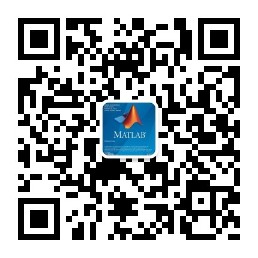博文
[转载]【信息技术】【2015】图像序列中相互作用目标的跟踪
||
图像序列中的目标跟踪是计算机视觉中的一个关键问题,它的目标是跟踪随时间移动或演化的对象,同时保持每个对象的身份。然而,大多数现有的方法只关注一类对象,只对非常简单的交互进行建模,例如不同的对象在给定的时间段中并不占据相同的空间位置。它们忽略了对象可能以更复杂的方式进行交互。例如,在停车场,一个人可能会上车,从而在场景中变得不可见。
本文主要研究图像序列中相互作用目标的跟踪问题。结果表明,利用不同目标之间的关系,可以获得更可靠的跟踪结果。我们探索了广泛的应用,如团队运动中的球员和球的跟踪、停车场中的汽车和人体跟踪、生物医学图像中的分割细胞跟踪。在团队运动中,我们从跟踪球开始,这是一项非常具有挑战性的任务,因为球经常会被不同的球员遮挡。我们提出了一种序贯的方法,首先跟踪球员,然后通过决定哪个球员(如果有的话)在任何给定的时间拥有球,以此实现球的跟踪。这与首先尝试跟踪球,然后才分配控球权的标准方法非常不同。我们的研究表明,当我们的方法应用于长时间的篮球和足球比赛时,它能显著地提高跟踪的性能。
然后我们专注于同时跟踪相互作用的物体。我们将跟踪问题表示为一个网络流混合整数规划,并用线性流约束来表示一个目标在另一个目标位置出现或消失的事实。在团队运动中,我们在涉及汽车和乘客的场景中演示了我们的方法,比如,包由人携带或丢弃,球从一个球员传递到另一个球员。特别地,我们表明,通过对不同类型物体的轨迹进行联合和全局估计,可以从其他物体的检测中推断出那些最初没有完全基于图像证据检测到的物体的存在。
我们最后扩展了在生物医学图像中分裂细胞的跟踪方法。在这种情况下,细胞相互重叠,产生出子细胞。提出了一种自动检测和跟踪时移图像中细胞种群的新方法。与早期依赖于连接预定的和潜在的不完全检测集的方法不同,我们生成了一组竞争检测假设的过完备集。然后,我们通过求解整数规划来同时执行检测和跟踪,以找到最优且一致的子集。这样就不需要启发式来处理由于遮挡和复杂形态学而丢失的检测。我们证明了我们的方法在一系列具有挑战性的由聚集细胞组成的图像序列上的有效性,并表明它优于目前的最新技术。
Object tracking in image sequences is a keychallenge in computer vision. Its goal is to follow objects that move or evolveover time while preserving the identity of each object. However, most existingapproaches focus on one class of objects and model only very simpleinteractions, such as the fact that different objects do not occupy the samespatial location at a given time instance. They ignore that objects mayinteract in more complex ways. For example, in a parking lot, a person may getin a car and become invisible in the scene. In this thesis, we focus ontracking interacting objects in image sequences. We show that by exploiting therelationship between different objects, we can achieve more reliable trackingresults. We explore a wide range of applications, such as tracking players andthe ball in team sports, tracking cars and people in a parking lot and trackingdividing cells in biomedical imagery. We start by tracking the ball in teamsports, which is a very challenging task because the ball is often occluded bythe players. We propose a sequential approach that tracks the players first,and then tracks the ball by deciding which player, if any, is in possession ofthe ball at any given time. This is very different from standard approachesthat first attempt to track the ball and only then to assign possession. Weshow that our method substantially increases performance when applied to longbasketball and soccer sequences. We then focus on simultaneously trackinginteracting objects. We achieve this by formulating the tracking problem as anetwork-flow Mixed Integer Program, and expressing the fact that one object canappear or disappear at locations of another in terms of linear flowconstraints. We demonstrate our method on scenes involving cars and passengers,bags being carried and dropped by people, and balls being passed from oneplayer to the next in team sports. In particular, we show that by estimatingjointly and globally the trajectories of different types of objects, thepresence of the ones which were not initially detected based solely on imageevidence can be inferred from the detections of the others. We finally extendour approach to dividing cells in biomedical imagery. In this case, cells interactby overlapping with each other and giving birth to daughter cells. We propose anovel approach to automatically detecting and tracking cell populations intime-lapse images. Unlike earlier approaches that rely on linking apredetermined and potentially incomplete set of detections, we generate anovercomplete set of competing detection hypotheses. We then perform detectionand tracking simultaneously by solving an integer program to find the optimaland consistent subset. This eliminates the need for heuristics to handle misseddetections due to occlusions and complex morphology. We demonstrate theeffectiveness of our approach on a range of challenging image sequencesconsisting of clumped cells and show that it outperforms the state-of-the-arttechniques.
1. 引言
2. 初步知识
3. 聚焦团队运动的球的跟踪
4. 利用交织网络流跟踪交互对象
5. 利用网络流跟踪分离细胞
6. 结论
附录A 轨迹图的完整推导
附录B 全图与修剪图
附录C 细胞跟踪的特征
附录D 细胞追踪的附加比较结果
更多精彩文章请关注公众号:
https://blog.sciencenet.cn/blog-69686-1244711.html
上一篇:[转载]【计算机科学】【2019.03】基于深度学习的动物识别
下一篇:[转载]【计算机科学】【1997】人工神经网络在澳大利亚金融市场的应用